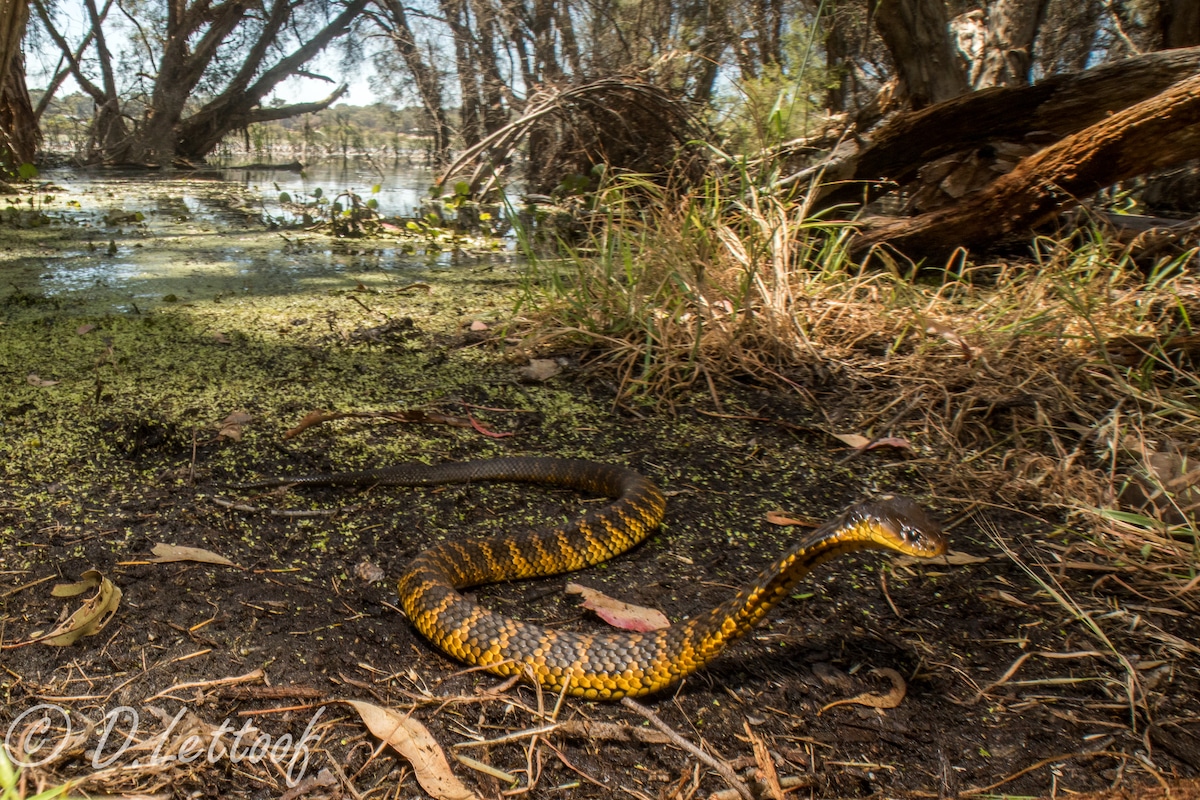
How Urban Isolation Could Make Snakes More Vulnerable to Climate Change

Could urbanization make it harder for some animals to adapt to the climate crisis?
A study published in the journal PLOS ONE last year found that the populations of Western tiger snakes (Notechis scutatus occidentalis) that were the most cut off from others due to urbanization in and around Perth, Australia, had reduced genetic diversity, making them more at risk for inbreeding.
“If tiger snake populations isolated by urbanisation are suffering from lower genetic diversity, they can lose their ability to adapt in order to survive ever-changing environments due to development, pollution and climate change,” study lead author and Curtin University Ph.D. candidate Damian Lettoof said in a press release.
Snakes in the City
Long before the skyscrapers went up, the land that would become Perth, Australia, was dominated by wooded sand dunes and wetlands that would emerge with the spring rains and dry up in the summer. Tiger snakes would glide between these wetlands as the year progressed, chasing the water as the marshes dried.
However, beginning in 1850 humans began to develop the area for agriculture and city-building, and 70 percent of the wetlands vanished. The remaining tiger snakes found refuge around stable lakes and rivershores, but were therefore cut off from each other over time.
Despite all of these changes, tiger snakes are still hanging on. They are considered a species of Least Concern by the International Union for Conservation of Nature Red List. However, they were once considered at risk for extinction, mostly because of wetland loss, and there are some reports that their numbers are declining in urban areas.
“Despite persisting in these fragmented wetland habitats thus far, they are exposed to and bioaccumulate a suite of contaminants that likely contribute to poorer health and decreased survival of individuals,” the study authors wrote. “However, the degree to which small population sizes, geographic isolation and inbreeding effects contribute to population health in these urban and peri-urban populations has not yet been investigated.”
The study authors wanted to answer some of these questions. They were also interested in the snakes because they are considered “bioindicators” whose health reflects the overall health of the ecosystems they inhabit. To this end, the researchers looked at 150 snakes from six populations of Western tiger snakes in Perth’s remaining wetlands and one population on Carnac Island, which they believed had been introduced around 90 years ago. This allowed them to compare the isolating impacts of urbanization with an actual island population.
What they found was that the most distinct population was the population that had been isolated by actual seawater on Carnac Island. However, they also found “surprising” results from the snakes at Herdsman Lake – the wetland most boxed in by city, Lettoof told EcoWatch in an interview.
“Herdsman Lake was kind of sticking out as quite distinct for what we would expect in 150 years and quite a large population,” he said.
North and South
The researchers also observed a difference in the genetic diversity of the snake populations on the north and south sides of the Swan/Canning River system that runs through Perth. The northern populations, which included the snakes of Herdsman Lake, “were showing about 30 or 40 percent less genetic diversity than those on the south,” Lettoof said.
This could be due to a combination of factors, including the fact that the snakes can’t cross the river or navigate the encroaching city. However, the northern snakes also live in the northern edge of the Western tiger snakes’ range.
“That northern side of the river is the edge of the whole Tiger snake species distribution on the north side, it’s basically like a little island in itself,” Lettoof said.
While so far their relative genetic isolation isn’t harming the northern snakes, it could make them incredibly vulnerable to the climate crisis since they are a species that prefers cooler temperatures.
“As the climate warms and it gets hotter further south, if they don’t persist, that can remove like a whole fraction of the species distribution,” he warned. “The guys on the north side already aren’t that genetically fit to survive changes.”
The lack of genetic diversity in the more urban-enclosed populations isn’t just a concern for the snakes themselves. It could also indicate that a similar thing is happening to other wetland animals that can’t fly or swim to other locations and “don’t want to cross into the urban jungle,” in Lettoof’s words.
“If this is happening to Tiger snakes, it’s probably happening to the lizards and maybe the frogs as well,” he said.
However, the researchers also made a discovery that could help advise conservation measures going forward. The effective population size for the snakes at a given site was mostly determined by the size and quality of the habitat, and not the degree to which it was surrounded by city.
“This suggests that ecosystem management and restoration may be the best method to buffer the further loss of genetic diversity in urban wetlands,” the study authors wrote.

 233k
233k  41k
41k  Subscribe
Subscribe 